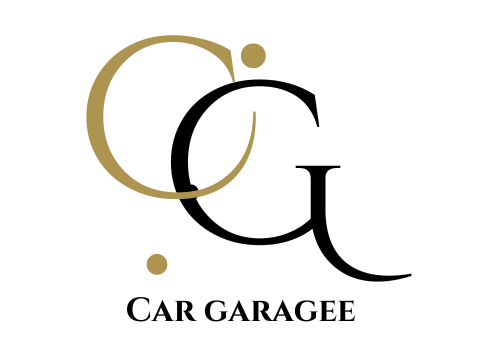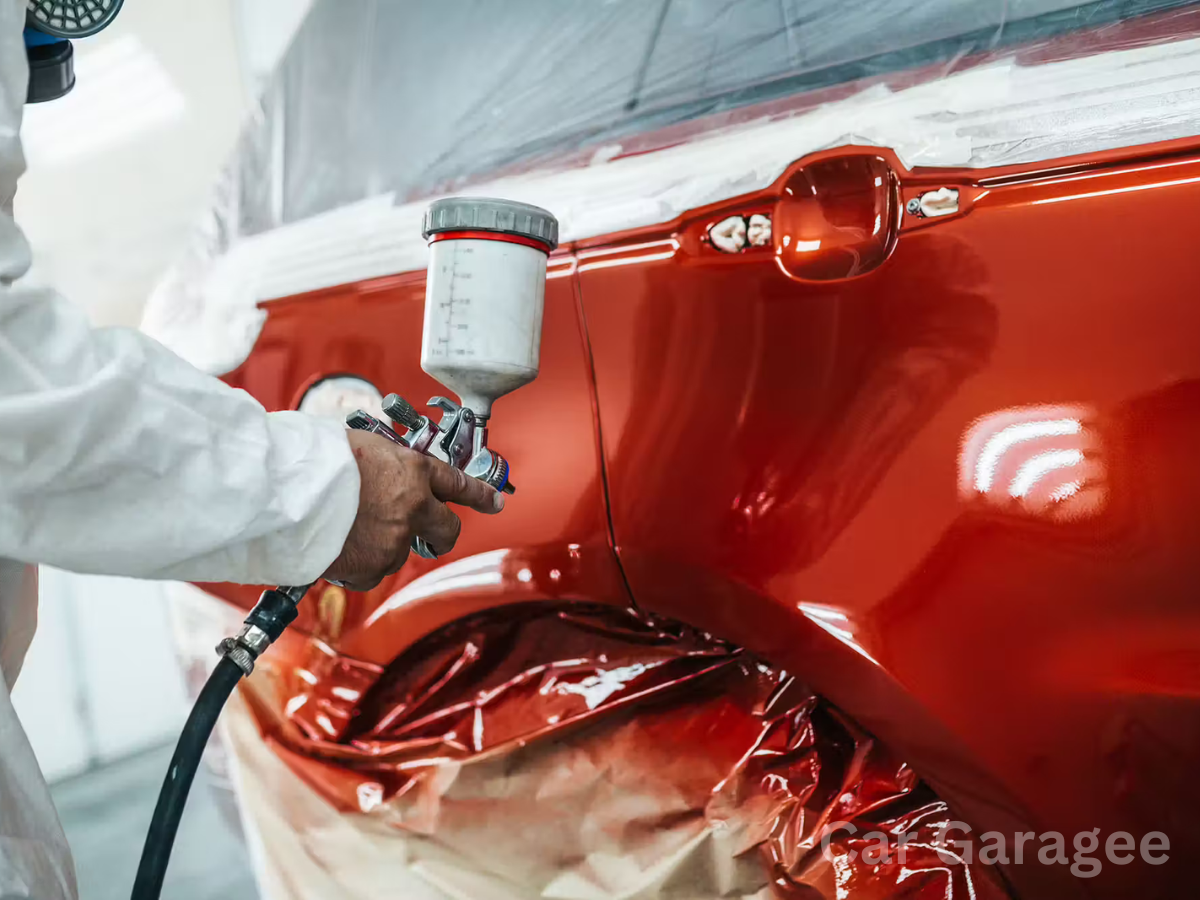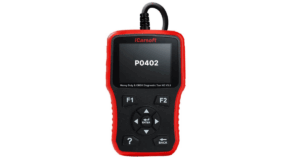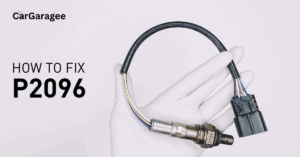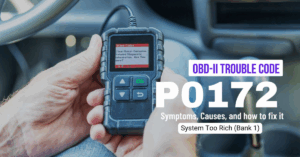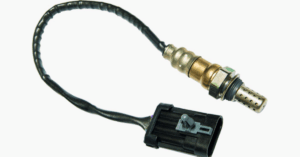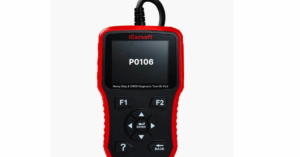When painting a vehicle and wondering How Much Paint to Paint a Car?, there are many products you’ll need to consider, like primers, undercoats, paints, and varnishes. Whether you’re doing a full repaint or just a touch-up, understanding the right quantities of paint is key. It depends on the type of product, the thickness of the paint being applied, and the surface being worked on. Different projects may require pure paint or need mixing and dilution for better coverage.
Primers, lacquers, and varnishes each have their own theoretical yield and covering power, so the technical side of painting cannot be ignored. If you’re looking to update the outlook of your car in an inexpensive way, painting can be one of the best choices. With a little estimation and knowing your car’s paint needs, you can save money while achieving a complete finish.
How much paint do I need to paint a small car?
When you’re painting a small car, like a 1972 Ford Maverick or something smaller like a Prius, the amount of paint you need to paint a car depends on several factors. First, if there is any body work or damage, you’ll need to start by sanding the old finish to get a smooth surface. Then, applying a couple quarts of primer is necessary to ensure the paint adheres properly. For the color coat, you can expect to use about a gallon of paint, whether it’s acrylic, latex, or another type.
If you’re applying a clear coat, you’ll also need a gallon to cover the entire vehicle. Additionally, don’t forget the sealer, reducer, activator, and hardener, which are all required for the best results. Using the right equipment, such as an HVLP sprayer in a climate-controlled building, will help give the paint a professional finish.
The price of the job can vary greatly. If you’re doing a basic job with off-brand materials, you can keep costs little over a thousand dollars. However, if you’re using a name-brand product, expect to spend between $2,000 and more, especially when factoring in additional materials like brushes, rollers, or even an ajax wash job. For smaller jobs, such as touch-ups on cars or trucks, you might only need a couple pints of lacquer. Whether you’re painting a car as a side gig or repainting for a sale, knowing the size of the vehicle and the type of paint will help you prepare the right amount and avoid wasting gallons of paint.
Car Parts and Vehicle Paint Requirements
| m² | Part / Vehicle Type | Primer (L) | Paint (L) | Varnish (L) |
|---|---|---|---|---|
| 0.75 | Car Fender | 0.25 L | 0.25 L | 0.25 L |
| 0.75 | Door | 0.25 L | 0.25 L | 0.25 L |
| 2 | Hood | 0.50 L | 0.50 L | 0.50 L |
| 0.5 | 1 Exterior Car Rim | 0.15 L | 0.15 L | 0.15 L |
| 0.5 | Mudguard | 0.10 L | 0.10 L | 0.10 L |
| 0.75 | Reservoir | 0.15 L | 0.15 L | 0.15 L |
| 12 – 15 | City-Dweller Car | 1 – 2 L | 1 – 2 L | 2 L |
| 20 | Sedan Car | 2 L | 2 – 3 L | 2 L |
| 25 | 4×4 | 2 – 3 L | 3 – 4 L | 3 L |
| 40 – 50 | Camping Car / Van | 3 – 4 L | 4 – 6 L | 4 – 6 L |
| 1 – 2 | Moto Roadster / Cruiser | 0.5 L | 0.5 L | 0.5 L |
READ MORE:
Red Car with Key Symbol on Dashboard Nissan: What It Means & How to Respond
Emissions System Problem Honda: Causes and Solutions
How long will a Car Run with a Bad Alternator?
Important Things to Know about How Much Paint to Paint a Car
Determining the Right Amount of Paint
When determining the right amount of paint to paint a car, several variables must be considered. These include the size of the vehicle, the type of coating, and whether you’re doing the job yourself or hiring a professional. For a mid-size car, an inexperienced painter may need around one or two gallons, but a pro can achieve good results with just 3 quarts. Additionally, if you’re working on areas like the trunk, door jams, or the under-hood, the requirement for paint will likely increase. Using a spray mechanism such as an airbrush can require twice the paint compared to the usual method.
Large and Sizeable Vehicles
For large vehicles like SUVs or big-size cars, the amount of paint increases significantly. A pro might need 6-7 quarts, while an inexperienced painter may use two gallons to ensure even coverage. If you’re painting a contrasting color, prepare to mix more paint—often about half a gallon more than for the same color. Be sure to account for all the parts of the car, including hard-to-reach spots, as these require additional coating.
Choosing the Right Type of Paint
The type of paint you choose to paint a car also impacts the quantity. For example, acrylic or enamel can differ in how much coverage they provide. On smaller cars like the Subaru Stella, around 2-2.5 quarts of mixed paint is typically enough to apply two coats. For an average-sized Sedan, you might need a full gallon of enamel to ensure a proper finish. Don’t forget, some semi-transparent or glossy paints may need more, and it’s better to mix ¾ of the quantity at a time to avoid wasting materials.
Basecoat and Clear Coat Method
When preparing for a two-stage paint job, you’ll need both a base coat and a clear coat. For an average car like a 2000 Nissan Sentra, 2 quarts of base coat, mixed at a 1:1 ratio, will give you around a gallon of sprayable material. If you’re changing the color of the car, you’ll likely need 3 quarts of base coat, generating 1.5 gallons for spraying.
Cost Considerations for Paintwork
Lastly, always factor in the cost of paintwork. For a small project, mixing 2.5-3 quarts of clear coat with an activator is usually enough for cars like a Wagon R. But for larger vehicles like a Toyota Cruiser Prado, it’s better to prepare a full gallon. The cost for materials like a kit, which includes a hardener, activator, and solvent, can range from $100-$300, depending on the brand. Mixing the whole solution at once is not recommended, as any unused paint will be wasted.
How Much Does it Cost to Paint a Car?
The cost to paint a car can vary widely depending on several factors, including the type of paint, the size of the vehicle, and the quality of the paint job. For people with limited budgets, a single-stage enamel paint is often sufficient to give your car a new look. A basic paint job, which involves minimal prep work and only one coat, can cost between $300 and $1,000. This is usually enough to cover the car. However, some painters may skip non-visible areas like underneath the hood or inside door frames, leaving them in their original color.
For a mid-grade job, which includes better prep work, higher quality paint, and additional coats for a smoother finish, you can expect to pay around $1,000 to $4,500. The amount spent may also vary based on the color and brand of the paint, as well as the location of the auto body shop. If you’re repainting a family car, this range is typically what you’ll be charged, but detailing and bodywork can add to the total cost.
For high-end paint jobs, which include sanding the car down to bare metal, applying multiple coats of premium paint, and achieving a high-quality finish, the cost can jump between $5,000 and $20,000. These jobs often feature custom designs and other add-ons that increase the overall price. Whether you’re choosing a basic, mid-grade, or premium option, getting a detailed estimate from a reputable auto body shop before agreeing to any work is a good idea.
FAQS
How many litres of paint is needed to paint a car?
If you’re painting the whole car, the average norm suggests that 1/4 liter of paintwork material is usually spent per 1 square meter of the body. For the entire painting, you will need about 3-3.5 liters of enamel. In addition, auto polish is typically required in the amount of 2/3 of the enamel, which means you’ll need 2-2.5 liters of it.
How much will 1 quart of automotive paint cover?
Approximate coverage for a quart of automotive paint is around 100 ft² per coat. This is ideal for a single container used on various surfaces like industrial projects, concrete, or automotive parts. Compared to smaller amounts, a 1/4 Pint typically covers 12 ft², while a Pint covers about 50 ft² per coat. Specialized paints like Rust Bullet, Pro PLUS, Black Shell, or White Shell may vary slightly in their coverage.
How many coats of 2K paint on a car?
Getting a perfect finish with 2K paint usually requires applying at least two coats. Automotive professionals often recommend this double coat approach to ensure proper protection and a good level of gloss. This is the standard practice for most paint jobs. If you’re looking for an even glossier finish or extra protection, you can add additional coats, sometimes going up to three or more coats.
What is the best ratio for car paint?
The common ratios for mixing car paint are usually 4:1:1 or 2:1:1 (paint: reducer: hardener), but these can vary depending on the type of paint you’re using. To get the best results, it’s important to first add the reducer by pouring it into the mixing cup. The reducer helps thin the paint, making it easier to apply and ensuring that it flows smoothly through the spray gun.
How much spray paint to paint a car?
Roughly, you will need about 4 500ml cans of car spray paint for the roof. For the bumpers, bonnet, doors, and boot, around 3 500ml cans of spray paint should be enough. To cover the wings and rocker panels, you will likely require 2 additional 500ml cans of car spray paint.

Mian Hashir is a passionate automotive enthusiast and the lead author at Car Garagee, a website dedicated to providing in-depth car reviews, maintenance tips, and the latest news in the automotive world. With years of experience in the industry, Hashir combines his technical knowledge with a love for cars to deliver insightful and engaging content. Whether you’re a car owner or a curious reader, Mian Hashir’s articles help readers make informed decisions, from choosing the right vehicle to understanding how to keep it in top condition.
